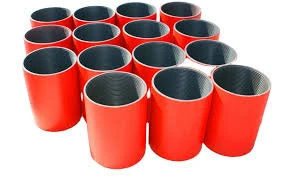- Afrikaans
- Albanian
- Amharic
- Arabic
- Armenian
- Azerbaijani
- Basque
- Belarusian
- Bengali
- Bosnian
- Bulgarian
- Catalan
- Cebuano
- Corsican
- Croatian
- Czech
- Danish
- Dutch
- English
- Esperanto
- Estonian
- Finnish
- French
- Frisian
- Galician
- Georgian
- German
- Greek
- Gujarati
- Haitian Creole
- hausa
- hawaiian
- Hebrew
- Hindi
- Miao
- Hungarian
- Icelandic
- igbo
- Indonesian
- irish
- Italian
- Japanese
- Javanese
- Kannada
- kazakh
- Khmer
- Rwandese
- Korean
- Kurdish
- Kyrgyz
- Lao
- Latin
- Latvian
- Lithuanian
- Luxembourgish
- Macedonian
- Malgashi
- Malay
- Malayalam
- Maltese
- Maori
- Marathi
- Mongolian
- Myanmar
- Nepali
- Norwegian
- Norwegian
- Occitan
- Pashto
- Persian
- Polish
- Portuguese
- Punjabi
- Romanian
- Russian
- Samoan
- Scottish Gaelic
- Serbian
- Sesotho
- Shona
- Sindhi
- Sinhala
- Slovak
- Slovenian
- Somali
- Spanish
- Sundanese
- Swahili
- Swedish
- Tagalog
- Tajik
- Tamil
- Tatar
- Telugu
- Thai
- Turkish
- Turkmen
- Ukrainian
- Urdu
- Uighur
- Uzbek
- Vietnamese
- Welsh
- Bantu
- Yiddish
- Yoruba
- Zulu
Optimizing Production Efficiency in Modern Pipe Manufacturing Processes
The Evolution and Significance of Pipe Mills in Modern Manufacturing
In the world of manufacturing, few industries are as essential and foundational as the pipe mill sector. A pipe mill is a facility where pipes are produced for various applications, including construction, infrastructure, and industrial uses. With the ever-growing demand for durable and efficient piping solutions, the evolution of pipe mills has played a crucial role in modern manufacturing processes.
Historical Context
Historically, the production of pipes can be traced back to ancient civilizations, where rudimentary techniques involving clay or metal were employed to create conduits for water or other materials. However, it wasn't until the Industrial Revolution that the concept of pipe mills began to take a more recognizable form. With the advent of machinery and steel production, the first modern pipe mills emerged in the late 19th century, introducing mass production techniques that revolutionized the industry.
The Production Process
Today, pipe mills utilize advanced technologies and processes to manufacture a variety of pipe types—ranging from welded to seamless pipes—in different materials such as steel, plastic, and more. The production process can be broken down into several stages
1. Raw Material Preparation The process begins with the selection and preparation of raw materials. Steel coils or billets are the most common starting points. These materials are carefully inspected and tested to ensure quality.
2. Forming In the forming stage, the raw materials are shaped into the desired pipe form. For welded pipes, the flat steel strips are rolled and then welded at the seams to create a pipe. In contrast, seamless pipes are produced by piercing a solid billet and elongating it through a series of processes.
3. Welding and Seam Treatment For welded pipes, the seams are treated to ensure strength and integrity. Techniques may include electric resistance welding (ERW), submerged arc welding (SAW), or other advanced methods that provide a durable bond.
4. Finishing After welding, the pipes go through various finishing processes, including trimming, sizing, and surface treatment. This ensures that the pipes meet specified dimensions and are free from defects.
pipe mill

5. Quality Control Throughout the production process, rigorous quality control measures are implemented. Non-destructive testing (NDT) techniques, such as ultrasound and radiography, are used to detect any flaws that could compromise the pipe’s structural integrity.
6. Packaging and Shipment Once the pipes pass quality inspections, they are bundled, packaged, and prepared for shipment to customers worldwide.
The Role of Technology
The integration of technology in pipe mills has significantly increased efficiency and product quality. Automation, robotics, and smart manufacturing technologies have streamlined production processes, reduced waste, and enhanced precision. Moreover, Computer Numerical Control (CNC) machines allow for intricate designs and exact specifications, catering to the unique needs of various clients.
The incorporation of Industry 4.0 principles means that data analytics and IoT are also becoming more prevalent in pipe mills. Real-time monitoring of production parameters and maintenance schedules helps in minimizing downtime and optimizing operations, thus ensuring a more cost-effective production cycle.
Challenges and Future Prospects
The pipe mill industry, like many others, faces challenges such as fluctuating raw material prices, environmental regulations, and the need for sustainable practices. As the world shifts towards greener alternatives, pipe mills are exploring the use of recyclable materials and energy-efficient processes.
In the coming years, the demand for high-quality, durable pipes is expected to rise, driven by infrastructure projects and developments in the energy sector. This presents an opportunity for pipe mills to innovate and adapt their processes to meet the evolving market needs, focusing on sustainability and efficiency.
Conclusion
In summary, pipe mills play an indispensable role in the manufacturing landscape. By evolving through technological advancements and adapting to market demands, these facilities not only contribute to various industries but also drive the global economy forward. As we look to the future, the continued innovation within pipe mills will be crucial in addressing both current challenges and emerging opportunities in the manufacturing sector.
-
Tubing Pup Joints: Essential Components for Oil and Gas OperationsNewsJul.10,2025
-
Pup Joints: Essential Components for Reliable Drilling OperationsNewsJul.10,2025
-
Pipe Couplings: Connecting Your World EfficientlyNewsJul.10,2025
-
Mastering Oilfield Operations with Quality Tubing and CasingNewsJul.10,2025
-
High-Quality Casing Couplings for Every NeedNewsJul.10,2025
-
Boost Your Drilling Efficiency with Premium Crossover Tools & Seating NipplesNewsJul.10,2025







